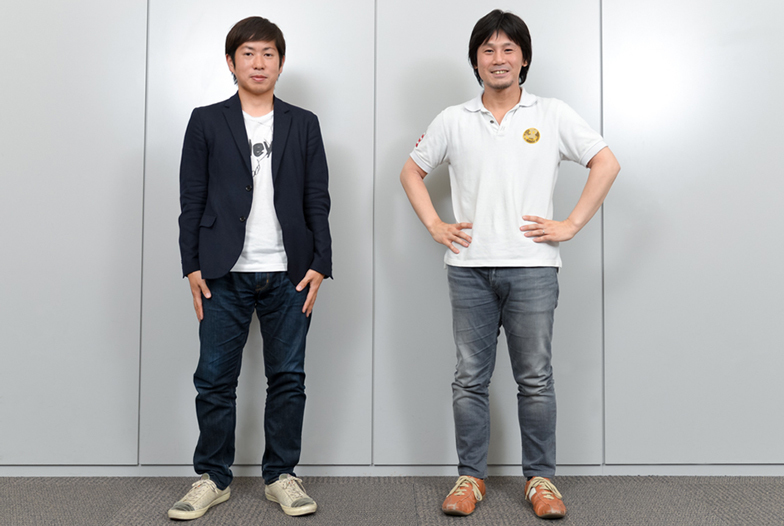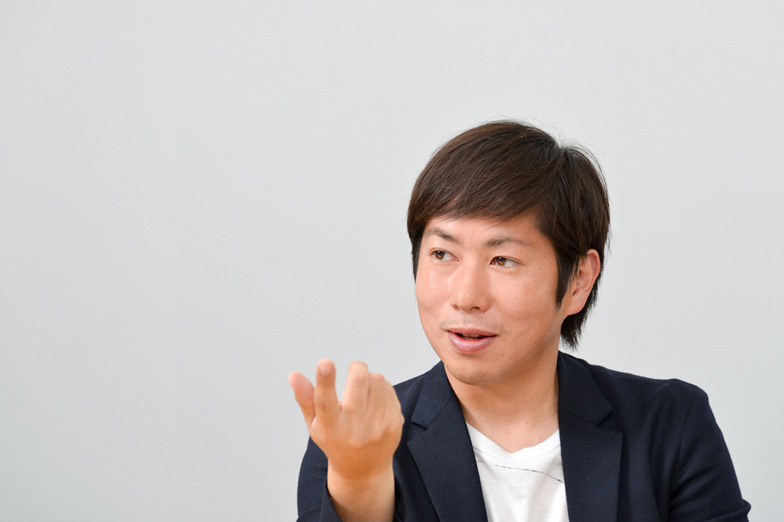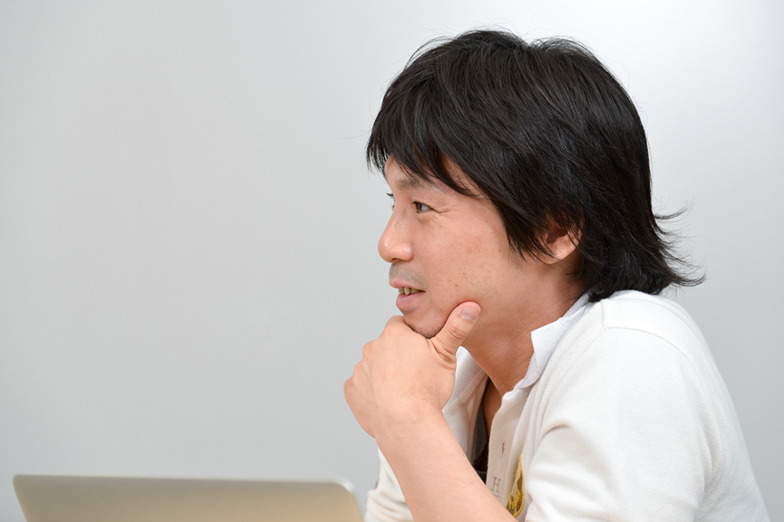Continuing from last time, Noritaka Obuse, Solution Director and Planning Planner at Dentsu Inc., interviews Yoshifumi Kakiuchi, the editor behind numerous bestsellers including Why Doesn't the Bamboo Pole Shop Go Out of Business? (Kobunsha). They broadly discuss the theme of "convincing solutions," covering the necessary processes, questions to ask others, and even the value of emotions in the future.

There must be a process to reach understanding. Conclusions alone cannot satisfy.
Obuse: In the first part, we discussed creating stories and contexts that lead to convincing solutions. Mr. Kakinouchi, when creating new books, you build the context for each one individually, right?
Kakuchi: Our initial goal was to get people to resonate with the label's context and become fans. But of course, for each individual book, we build its context, present what kind of book it is, and aim to gain their understanding. For books, the equivalent of a presentation is the "Introduction" section. I believe the key there is how well you can stir the reader's emotions. We explain who is speaking, what they're saying, how they're saying it, and what benefits the reader will gain. It's crucial that this becomes the motivation for someone picking up the book in a store to buy it. A "preface" lacking the basic 5W1H isn't really a "preface." That's why I put my life into the "preface" (laughs).
Obuse: So for books, the "Introduction" serves the role of conveying the context to the consumer.
Kakuchi: Exactly. From my perspective, I actually believe that 80% of books out there don't function as proper introductions. If you don't spark interest and stimulate emotion, consumers lose interest right at the introduction stage. I'm constantly thinking about how to stir emotions from the very beginning.
Obuse: Analyzing the "introductions" of hit books sounds fascinating. How do you create and convey context within the book itself?
Kakuchi: Takafumi Horie's book 'Zero' (Diamond Inc.), published right after his prison term ended, is a good example because it takes a different approach from his previous books. Horie has written about 50 books in the past, and they all say interesting things. However, he's very clever and has a strong service mentality, so he felt he had to deliver value beyond the book's cover price. He ended up cramming in conclusions. For example, "We don't need the institution of marriage" or "We don't need neckties." But readers want to know the process leading to those conclusions; the story explaining how he arrived at those convincing answers was missing.
So when creating 'Zero', I started with the hypothesis that Mr. Horie's previous presentation style might have been flawed. I focused solely on how to build the context. The first half is like Mr. Horie's autobiography, consciously aiming to build empathy for him as a person: "This is the kind of person Takafumi Horie is," "This is what someone like Horie is saying." It's a presentation method that gives the convincing solution a story.

The right questions generate passion and intensity in the audience.
Obuse: Is there a similar episode in books like Why Doesn't the Bamboo Pole Shop Go Out of Business?
Kakuchi: The Bamboo Pole Shop might be the most brilliant example in the "Introduction" sections of the books I've worked on. When I started from the basics—"Accounting is hard, so let's make an introductory book" and "What even is an introductory book?"—I came across Goethe's words: "A true introductory book shows the clear connection between academic/specialized knowledge and the general public." That made me think: Let's tell that connection in an entertaining way, so I focused on the mechanics of business.
Take, for instance, that town clock shop where the old lady sits alone, and no matter when you go, there are never any customers. If the shop doesn't go out of business, the reason can be quantified, making it a subject for accounting. It was through solving mysteries like that I arrived at the Bamboo Pole Shop, and because it was so interesting, it became the title.
Obuse: The story leading to the bamboo pole shop is fascinating too! When I propose ideas to companies, I focus not on objectively correct strategies, but on whether they form a subjectively compelling narrative. What matters is crafting a "story people want to share" – one that spreads through word of mouth, reaching higher levels.
That's why I use the "knee-slapping moment" as my benchmark for whether a story or context is compelling. I believe conviction is also a form of discovery. So, when someone hears the story, can you create that "Ah, I see!" moment—that feeling of slapping your knee? In proposals, I consciously focus on whether I've amplified that "knee-slapping sensation." Of course, you also need to calculate how much of that sensation you can elicit based on the audience's knowledge and position—what words to use and how much impact they'll have.
Kakui: Regarding the investment manga 'Investor Z' (read samples here → Vol. 1, Vol. 2, Vol. 3 ※Recommended for latest versions of IE, Chrome, Firefox ), I have opportunities to meet with venture companies and venture capitalists. At its core, it's about what compelling story the entrepreneur can tell.
Obuse: That's exactly right for startups—it's make or break based on that story.
Kakui: Exactly. In the early startup phase, when you have no resources or proof, compelling questions like "I want to create a world like this" or "Is the current state really okay? Wouldn't this be better?" are crucial. The more passionate the story, the more likely you are to find people willing to help find the solution together. The difference lies in whether you can create a state of enthusiasm, and to create that enthusiasm, you need the right questions.
Obuse: In our line of work, we start with an orientation where the client poses a question like, "We're thinking about this issue; please propose solutions." But surprisingly, when we begin by asking, "Actually, I think the root problem might be this," it often leads to better proposals. I believe that kind of questioning connects to how you build that state of fervor.

The Future: "Emotion" Will Change the World
Obuse: Lately, I've noticed that the word "strategy" often carries this image of something complex, derived from mathematical data or the like. But ultimately, it's about what kind of story you can present and what kind of solution you can offer for a given conflict. "Strategy" and "story" are actually quite close. Stories that stir emotions and theoretical data aren't mutually exclusive. Data might be necessary to arrive at a convincing solution, and if you can use data to weave a story, that's probably a good thing too.
Kakuchi: It's simple, right? When you hear how viral media creates articles, they use data very effectively. They apparently come up with five different titles for each article before publishing. Since readers are segmented based on the types of articles they usually read, they never see the other titles. Then, they track the read-through rates for each title and switch all articles to the most-read title.
It's hard to do that with books, but it would be interesting if we could do something similar—like creating five title variations, standardizing on the best-selling one, or even changing titles between eastern and western Japan.
Obuse: Try-and-error is much easier with web articles, isn't it?
Kakuchi: Lately, I often discuss how the range of human emotions might become valuable. For example, if coffee costs 300 yen, both those who think it's delicious and those who don't still pay 300 yen. But imagine a future currency where the feeling of "delicious" is digitized, and accumulating lots of positive emotions builds trust that can be exchanged for goods. Wouldn't that be fascinating?
The cost-plus pricing method hasn't changed since Marx's time, but when big data and money connect, might we finally take a step beyond Marx's Capital? I think what will become valuable then is "emotion."
Obuse: So emotions will be involved in everything in the world.
Kakui: Exactly. In a mature society, competing on specs alone isn't enough. Everything will be story-driven to evoke emotion and stir feelings of joy, sorrow, anger, and pleasure. I believe the dawn of entertainment is just beginning.

Let's consciously practice "re-tagging" in our daily lives
Obuse: After hearing all these fascinating stories, I hope to offer readers some kind of tip for arriving at their own satisfying conclusions...
Kakuchi: First, return to the origin and find something that makes you think, "This is it!" and truly excites you. Once you're convinced, a story naturally emerges from that. Then, use that story to draw others in. The title of Toru Mijiro's book, 'The Enthusiasm of a Single Person' (Futabasha), is also a great phrase. Everything begins with the passion of one person. Isn't the first step to get yourself excited?
Obuse: Personally, when I think about a story, I start by talking to lots of different people. It's less about creating the answer myself and more about searching for a story that satisfies me through conversation. That persistence in searching until you find something convincing is essential for a satisfying solution.
Kakui: If you're not convinced yourself, the story won't have any strength. Also, honing your words is incredibly important. It's interesting how analog copywriting becomes a weapon precisely in the IT era. Even the same thing can shift context completely just by changing the "tag." For example, properties listed on "Tokyo R Real Estate" might be handled by other major agencies too, but changing the tag to something like "Showa Style" creates a story there, making it easier to resonate with people. Thinking about what tags you could apply to everyday things to make a story emerge might be good practice.
Obuse: What kind of tags have you been thinking about lately, Mr. Kakiuchi?
Kakuchi: I jot down words that catch my attention. Lately, it's been things like "Regular Full Tank," "Ramen with All Toppings," or "Rare Cuts." They're all words that get you excited, yet there's no mechanism to amplify that excitement. For instance, if a customer orders "Regular Full Tank" at a gas station, maybe loud music plays, or all the employees gather around (laughs). Since we have these naturally exciting elements, I think we can devise mechanisms or stories to connect them to even greater emotional impact.
Obuse: You're right, every one of those words gets you pumped up (laughs). Talking with you this time really helped clarify this idea of "story × solution" that hadn't fully taken shape in my mind yet. Going forward, we need to do more than just respond to the briefs clients give us. We need to collaborate with clients to launch projects from scratch, engaging diverse people both inside and outside the company. In doing so, the key is how to boost everyone's motivation. I realized that it's not just about "correct explanations or plans," but rather "stories that excite, inspire belief, and make people want to take a chance" that truly light a fire in people's hearts and become the convincing solution. Thank you so much for today!









